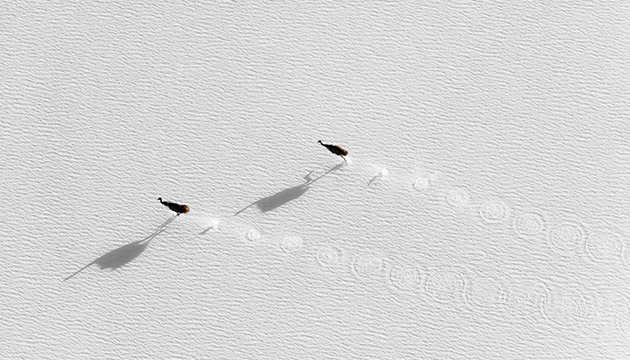Gary Steer's photographs of outback lakes show the are like abstract paintings on the broadest canvas there is.
Story By Gary Steer
Gary Steer first flew low over the central deserts of Australia in a small plane in 2000. “It was a landscape like an enormous canvas,” Gary says. Those haunting landscapes captured his imagination and the renowned documentary filmmaker was determined to see them again. It was three years before he had the opportunity to fly back, this time to concentrate on photographing the salt lakes. “I was fascinated by these lakes as works of art, but also by the science of them,” Gary says. “In many of the arid regions there are vast depressions in the land where nothing grows. Many of them have a ghostly white appearance caused by salt that has found its way there over the ages.” He was fascinated by the transformation of these deserts into salt lakes after rain, especially in areas where land hasn’t seen water for years. “Where the raindrops hit, puffs of dust momentarily explode into the air,” Gary says. “Then trickles stream together to form creeks that unite and grow into rivers. The water follows the paths of millions of previous flows. Rivers swell to form major arteries pulsating with massive flows of red, muddy water, the lifeblood of the continent’s inland deserts. Then the mystical forces of nature become the artist. The raw materials are sculpted and painted by the elements – floodwaters, wind, rain, heat, ice and the dust of willy-willies.” The scale is so huge that, from the ground, this art cannot be perceived, but when photographed from the air the lakes appear as compellingly beautiful paintings. “Life ends quickly and, like a desert mirage, these waters born of the monsoon vanish into thin air.”
This story excerpt is from Issue #100
Outback Magazine: Apr/May 2015










